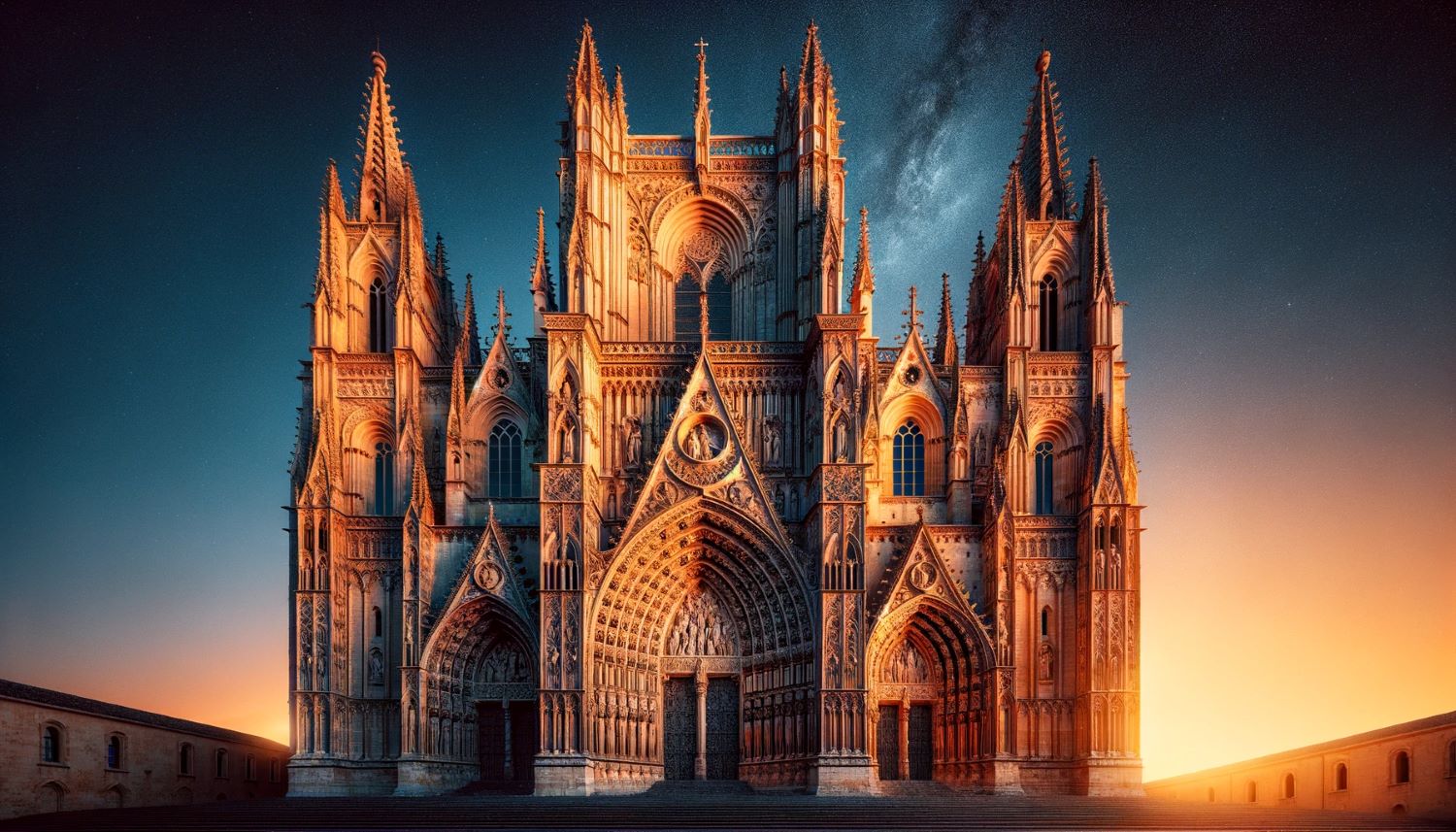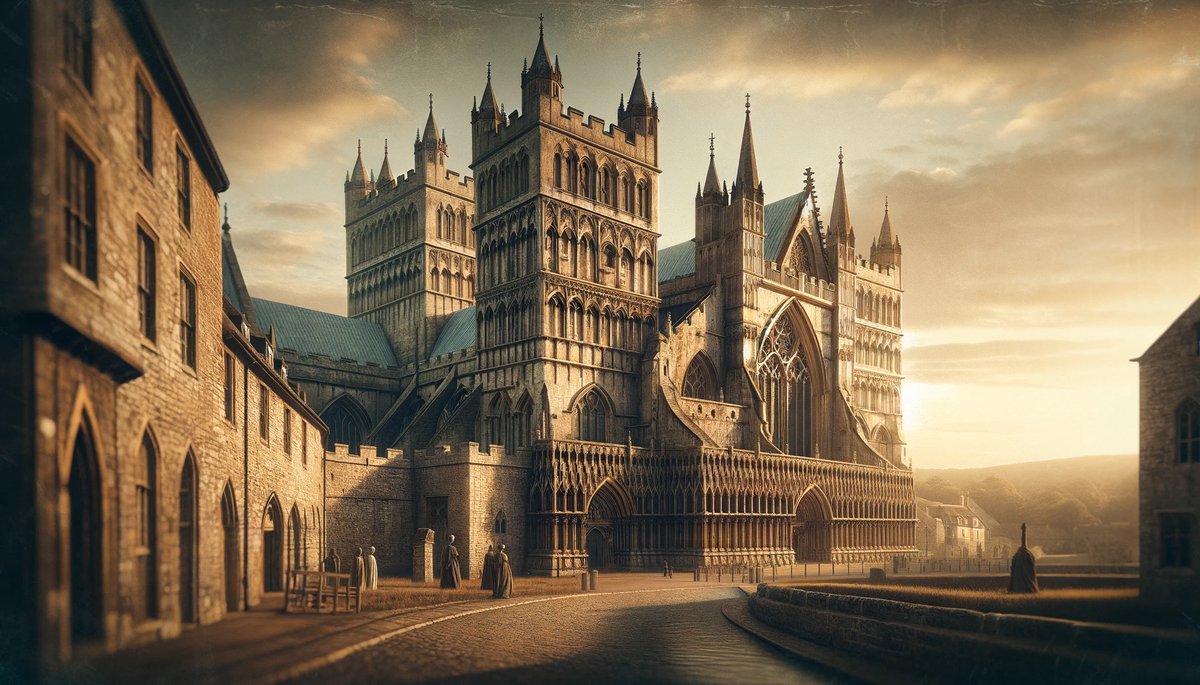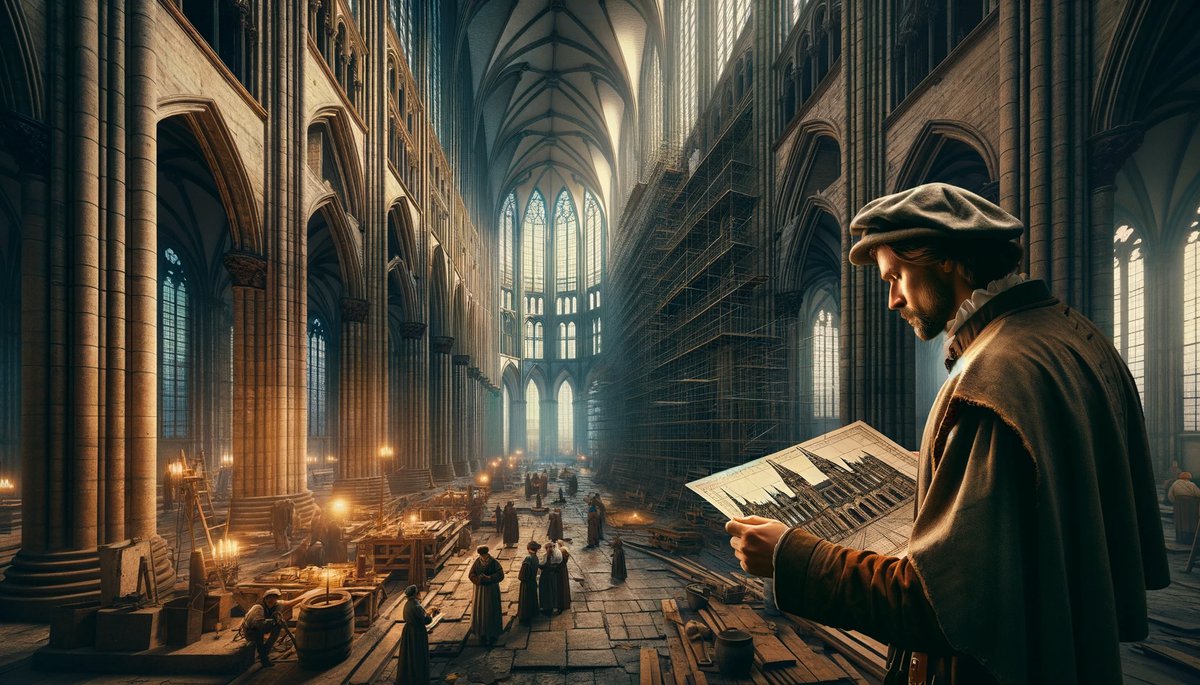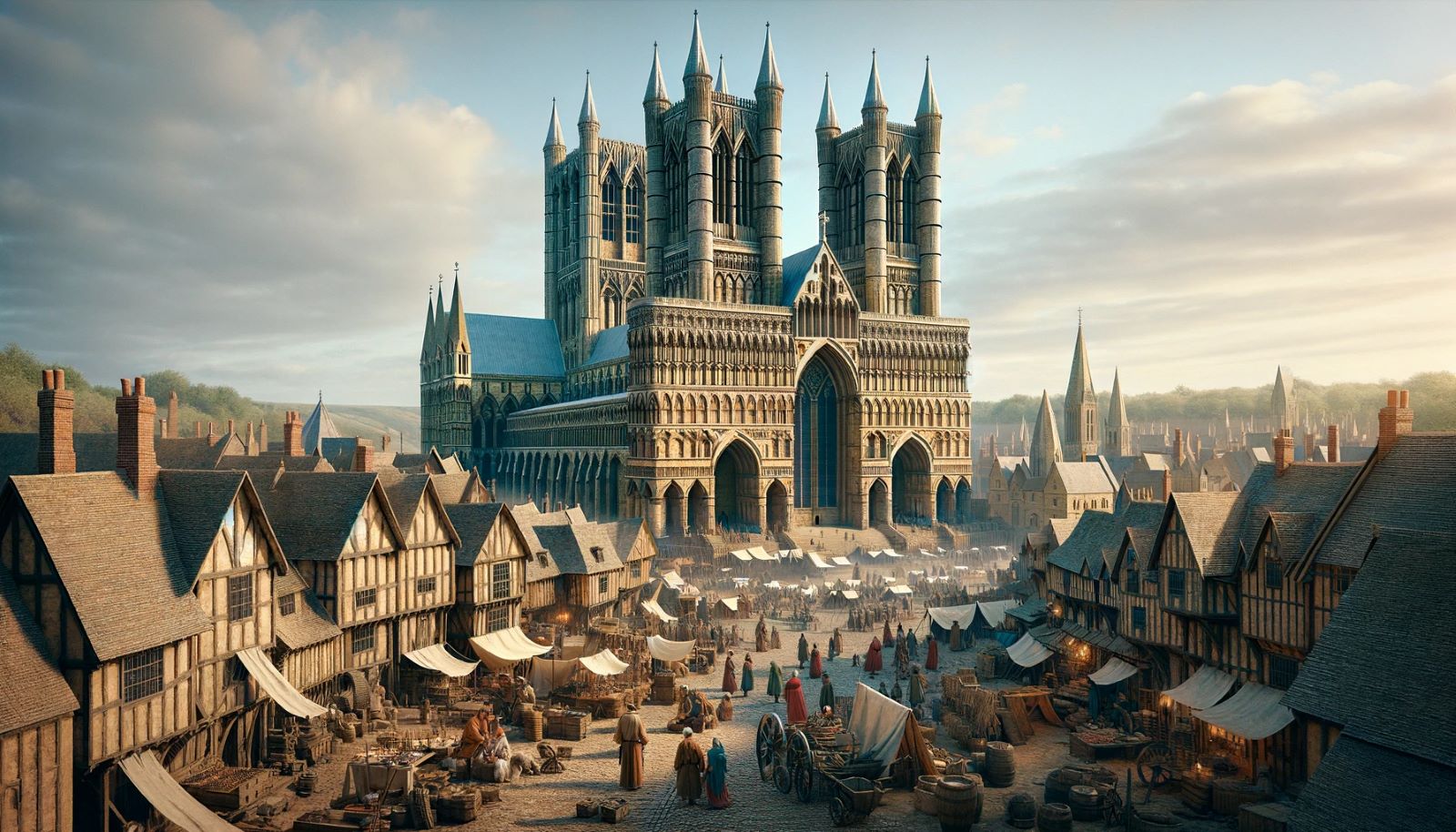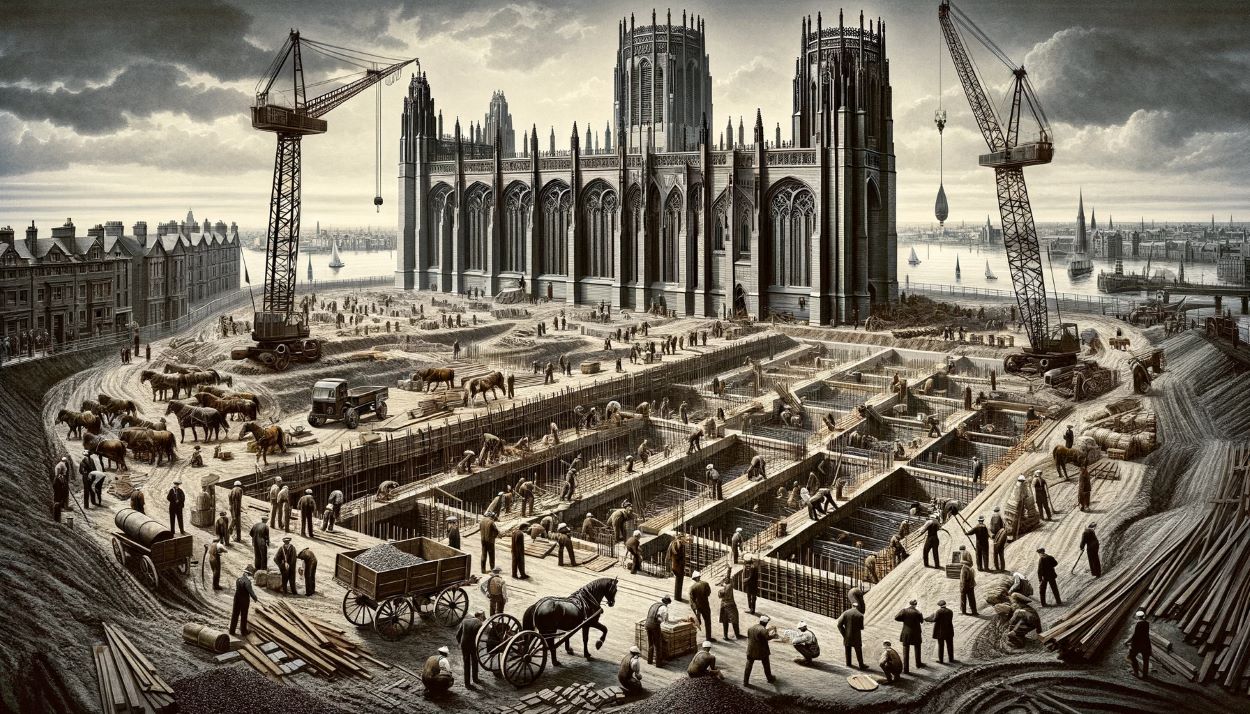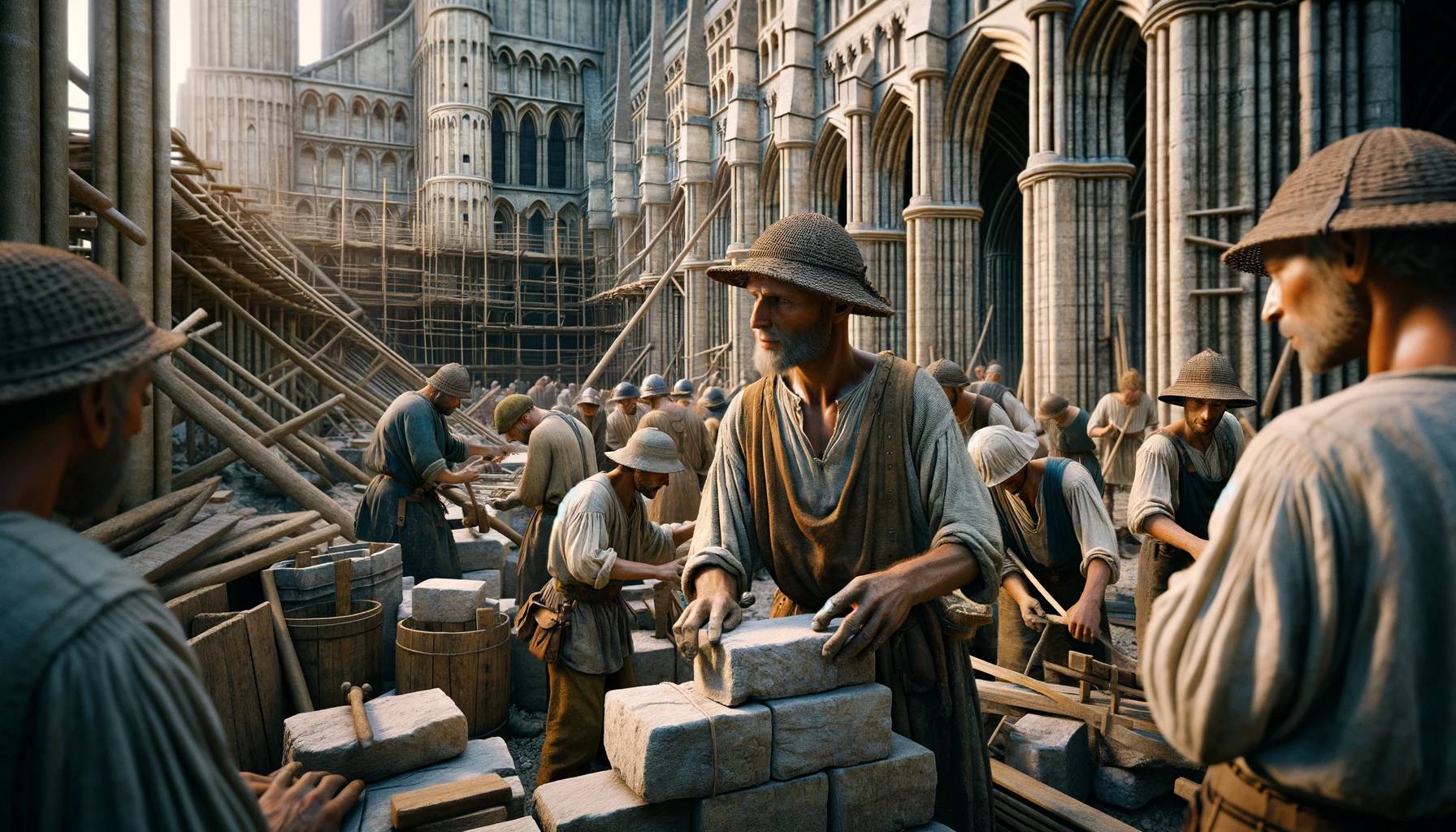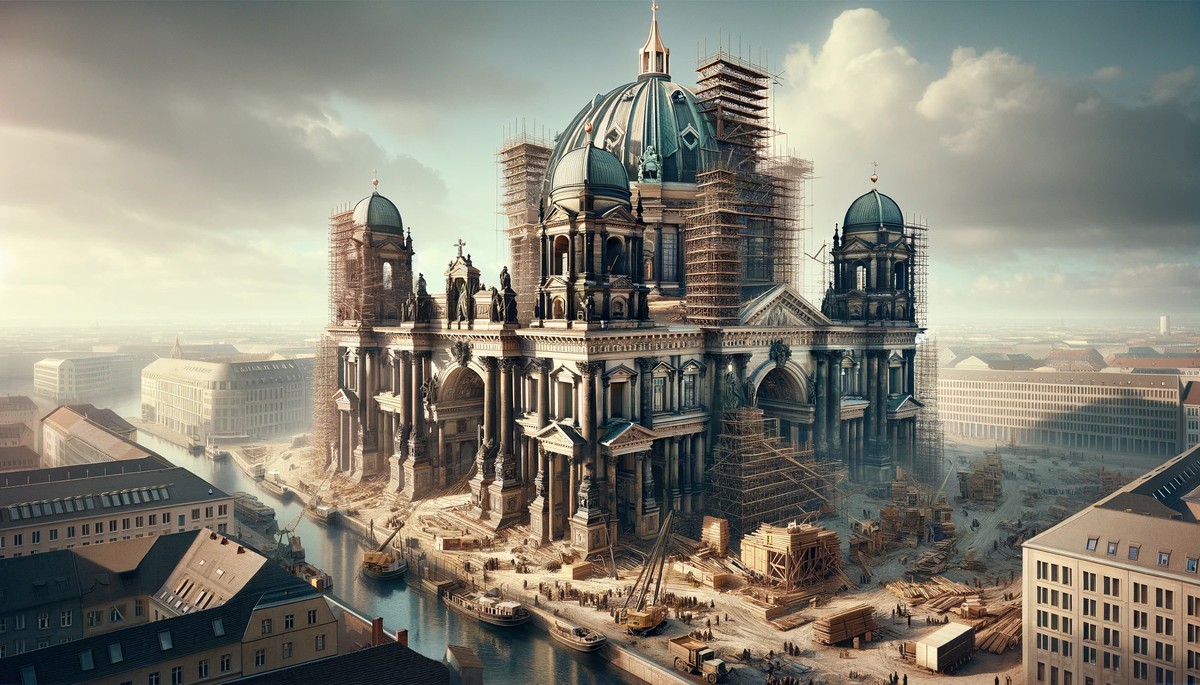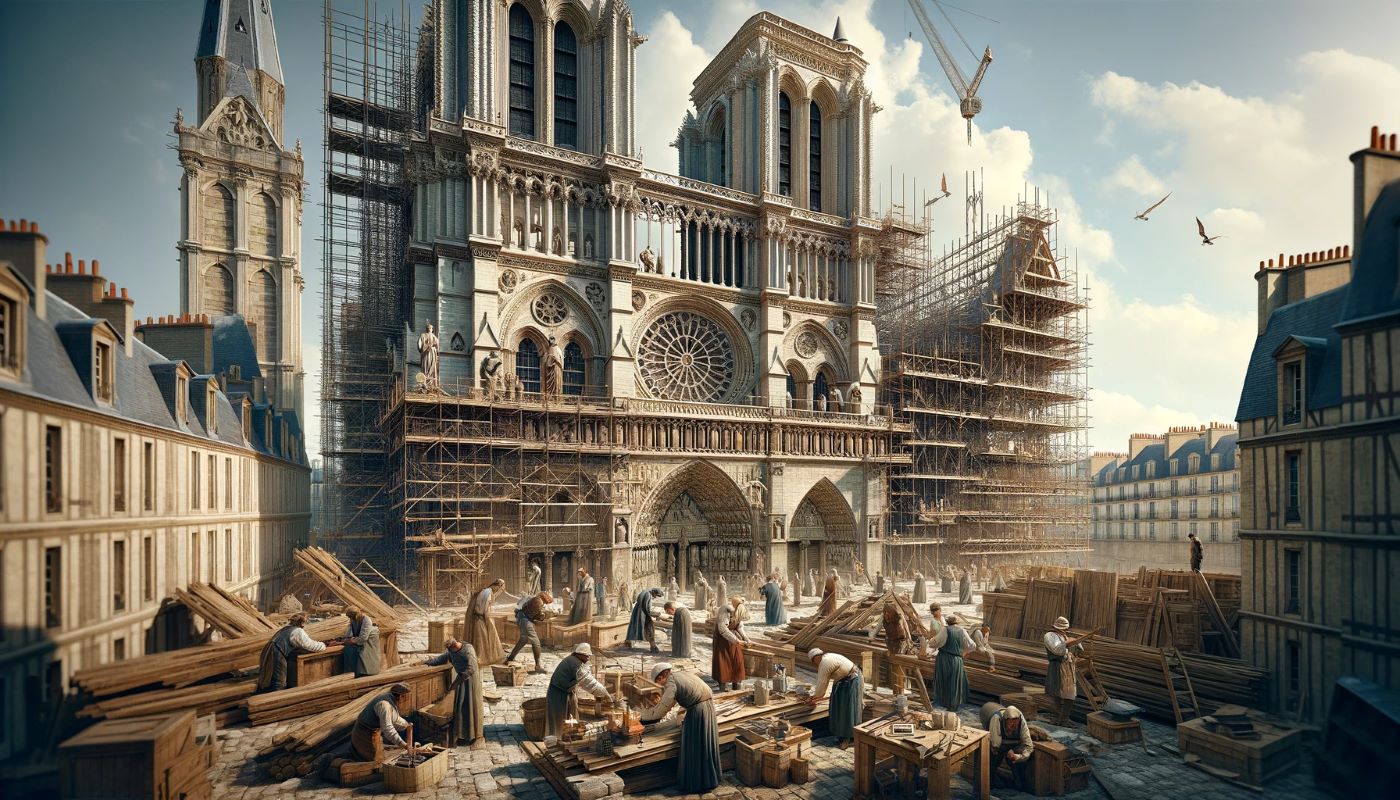Home>Arts and Culture>When Was Santiago De Compostela Cathedral Built
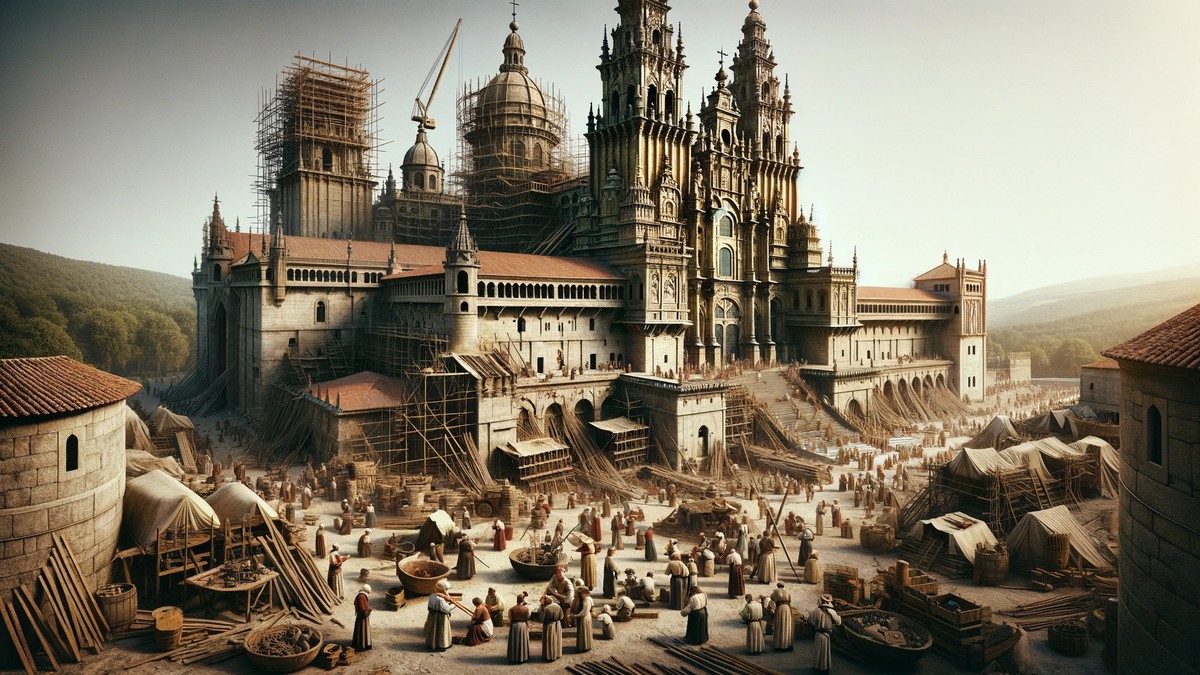

Arts and Culture
When Was Santiago De Compostela Cathedral Built
Published: February 17, 2024
Peter Smith, Editorial Director at Christian.net, combines deep insights into faith, politics, and culture to lead content creation that resonates widely. Awarded for his contributions to religious discourse, he previously headed a major organization for religious communicators, enhancing dialogue on faith's societal impacts.
Discover the history of Santiago de Compostela Cathedral, a masterpiece of arts and culture, and learn when it was built. Explore the architectural marvel and its significance in religious and cultural heritage.
(Many of the links in this article redirect to a specific reviewed product. Your purchase of these products through affiliate links helps to generate commission for Christian.net, at no extra cost. Learn more)
Table of Contents
Introduction
Santiago de Compostela Cathedral stands as a timeless testament to human creativity, faith, and architectural prowess. This awe-inspiring structure, nestled in the heart of Santiago de Compostela in Galicia, Spain, has beckoned pilgrims, history enthusiasts, and art aficionados for centuries. Its significance transcends mere architectural grandeur, as it embodies the spiritual and cultural essence of the region.
The cathedral's imposing presence and intricate details serve as a captivating gateway to a bygone era, inviting visitors to immerse themselves in the rich tapestry of history and artistry. As one approaches the cathedral, the sheer magnitude of its façade, adorned with ornate sculptures and intricate carvings, evokes a sense of reverence and wonder.
Beyond its physical allure, Santiago de Compostela Cathedral holds a profound spiritual significance. It is the reputed final resting place of Saint James the Greater, one of the twelve apostles of Jesus Christ. This sacred association has transformed the cathedral into a revered pilgrimage site, drawing devout worshippers and curious travelers from across the globe.
The cathedral's enduring allure lies not only in its religious importance but also in its role as a cultural and architectural marvel. Its construction, spanning centuries, reflects the evolution of architectural styles and techniques, offering a tangible chronicle of human ingenuity and perseverance.
As we delve into the history, construction, and significance of Santiago de Compostela Cathedral, we embark on a journey through time, unraveling the layers of its storied past and unraveling the profound impact it has had on art, culture, and spirituality.
Read more: Where Is Santiago De Compostela Cathedral
History of Santiago de Compostela Cathedral
The history of Santiago de Compostela Cathedral is steeped in legend and lore, intertwining religious fervor, architectural splendor, and the enduring spirit of pilgrimage. The origins of the cathedral can be traced back to the 9th century when a humble hermit stumbled upon a mysterious tomb in the remote region of Galicia, Spain. According to popular belief, the tomb contained the remains of Saint James the Greater, an apostle of Jesus Christ who had traveled to the Iberian Peninsula to spread the teachings of Christianity.
The discovery of Saint James' tomb sparked a fervent wave of pilgrimage to the site, transforming it into a sacred destination for devout Christians seeking spiritual solace and divine intervention. In response to this burgeoning pilgrimage, a small chapel was erected to enshrine the revered relics, laying the foundation for what would eventually evolve into the grand edifice of Santiago de Compostela Cathedral.
Over the centuries, the cathedral underwent a series of expansions and renovations, each phase bearing the imprint of prevailing architectural styles and cultural influences. The Romanesque and Baroque elements interwoven within its structure stand as testaments to the evolving artistic sensibilities of the eras in which they were crafted.
The cathedral's history is also punctuated by moments of triumph and tribulation. It weathered the ravages of war, fire, and natural calamities, each upheaval serving as a crucible that forged its enduring resilience. The intricate interplay of history and architecture within the cathedral's walls encapsulates the collective experiences of the people who labored to bring this monumental structure to life.
As the centuries unfolded, Santiago de Compostela Cathedral emerged as a symbol of spiritual devotion, a beacon of hope for pilgrims traversing the arduous Camino de Santiago, and a repository of artistic treasures. Its history is a tapestry woven with threads of faith, creativity, and human endeavor, resonating with the echoes of countless pilgrims who have sought solace and enlightenment within its hallowed precincts.
The narrative of Santiago de Compostela Cathedral is a testament to the enduring power of faith, the indomitable spirit of human aspiration, and the profound impact of cultural heritage. It stands as a living chronicle of the interwoven destinies of individuals and communities, transcending time to inspire awe and reverence in all who behold its majestic splendor.
Construction of the Cathedral
The construction of Santiago de Compostela Cathedral unfolded across centuries, bearing witness to the evolution of architectural styles and the unwavering dedication of countless artisans and craftsmen. The initial phase commenced in the late 11th century, marked by the laying of the foundation stone for what would become the grand edifice of the cathedral. The Romanesque style, characterized by robust stone walls, rounded arches, and barrel vaults, formed the architectural cornerstone of the early construction efforts.
As the centuries progressed, successive waves of expansion and embellishment imbued the cathedral with diverse architectural elements, reflecting the prevailing artistic sensibilities of each era. The transition from Romanesque to Gothic architecture introduced soaring vaulted ceilings, pointed arches, and intricate stained glass windows, infusing the cathedral with an ethereal luminosity and vertical grandeur.
The Baroque period witnessed a fervent embrace of ornate embellishments, elaborate facades, and exuberant decorative elements, further enriching the visual tapestry of the cathedral. Skilled artisans and master craftsmen labored tirelessly to carve intricate sculptures, mold delicate filigree, and adorn the interior and exterior surfaces with a profusion of artistic flourishes.
The construction of Santiago de Compostela Cathedral was not merely a feat of architectural engineering; it was a testament to the collective ingenuity and unwavering perseverance of the artisans who dedicated their lives to its realization. The meticulous craftsmanship evident in every sculpted figure, every intricately carved column, and every soaring spire attests to the profound dedication and artistic prowess that shaped the cathedral into a resplendent masterpiece.
The cathedral's construction journey, spanning centuries and encompassing diverse architectural styles, stands as a living chronicle of human aspiration and creative expression. It embodies the enduring legacy of those who toiled to erect a monument that transcends the boundaries of time, inviting visitors to marvel at the fusion of art, faith, and architectural magnificence that defines Santiago de Compostela Cathedral.
Architecture and Design
The architecture and design of Santiago de Compostela Cathedral stand as a testament to the ingenuity, artistry, and cultural influences that have shaped this iconic edifice. The cathedral's exterior facade, adorned with a profusion of sculpted figures, intricate carvings, and ornate embellishments, exudes a captivating grandeur that beckons visitors to delve into its rich tapestry of artistic expression.
The Romanesque influence is palpable in the robust stone walls, rounded arches, and sturdy columns that form the foundational elements of the cathedral's structure. These architectural features, characterized by their solidity and harmonious proportions, evoke a sense of timeless strength and enduring grace. As one gazes upon the facade, the intricate interplay of light and shadow accentuates the sculpted reliefs, infusing the exterior with a dynamic vitality that captivates the eye.
Moving beyond the Romanesque foundations, the transition to Gothic architecture heralds a breathtaking ascent toward the heavens. The soaring vaulted ceilings, pointed arches, and delicate tracery of the stained glass windows imbue the interior spaces with an ethereal luminosity, evoking a sense of divine transcendence. The interplay of light filtering through the stained glass creates a kaleidoscopic symphony of colors, enveloping the sacred precincts in a radiant aura that elevates the spiritual experience of visitors.
The Baroque embellishments, characterized by their exuberant ornamentation and elaborate detailing, further enrich the architectural narrative of the cathedral. Elaborate facades, intricately carved altarpieces, and ornate chapels bear the hallmark of Baroque opulence, inviting visitors to immerse themselves in a world of lavish artistic expression. The interweaving of diverse architectural styles within the cathedral's design reflects the evolving artistic sensibilities and cultural influences that have left an indelible imprint on its form and structure.
The interior spaces of Santiago de Compostela Cathedral unfold as a symphony of architectural marvels, with each chapel, nave, and transept offering a unique tableau of artistic splendor. The interplay of light, shadow, and spatial dynamics creates a sensory journey that transcends mere physical dimensions, inviting visitors to embark on a spiritual and aesthetic odyssey.
In essence, the architecture and design of Santiago de Compostela Cathedral encapsulate the collective aspirations, creative fervor, and cultural legacies that have converged to create a monument of enduring significance. It stands as a living testament to the harmonious fusion of architectural styles, artistic expressions, and spiritual symbolism, inviting visitors to behold the timeless allure of this cultural treasure.
Importance and Significance
The importance and significance of Santiago de Compostela Cathedral transcend its architectural grandeur, encompassing profound spiritual, cultural, and historical dimensions that resonate with visitors from around the world. As the reputed final resting place of Saint James the Greater, one of the twelve apostles of Jesus Christ, the cathedral holds immense religious significance for devout Christians and pilgrims undertaking the revered Camino de Santiago pilgrimage. The veneration of Saint James and the spiritual aura surrounding his relics have transformed the cathedral into a revered sanctuary, where pilgrims seek solace, enlightenment, and a deeper connection to their faith.
Beyond its religious import, Santiago de Compostela Cathedral stands as a cultural treasure, embodying the artistic achievements and creative expressions of diverse epochs. Its architectural evolution, spanning Romanesque, Gothic, and Baroque styles, serves as a tangible chronicle of the artistic sensibilities and technical prowess of the eras in which it was crafted. The cathedral's sculpted facades, soaring spires, and resplendent interiors bear the indelible imprint of master artisans and craftsmen, inviting visitors to marvel at the fusion of art, faith, and human ingenuity.
The cathedral's role as a pilgrimage destination has fostered a rich tapestry of traditions, rituals, and communal gatherings, infusing the site with a vibrant cultural legacy. The Camino de Santiago pilgrimage, with its network of ancient pathways converging at the cathedral, has facilitated cultural exchanges, spiritual introspection, and the forging of enduring human connections. The cathedral serves as a symbolic terminus for pilgrims' arduous journeys, symbolizing the fulfillment of spiritual quests and the celebration of shared human experiences.
Moreover, Santiago de Compostela Cathedral holds a pivotal place in the annals of history, bearing witness to the ebb and flow of civilizations, the tumult of wars, and the resilience of human endeavor. Its enduring presence has transcended centuries, serving as a beacon of hope, a repository of knowledge, and a testament to the enduring legacy of human creativity. The cathedral's archives, libraries, and artistic treasures stand as repositories of historical insights, offering a window into the collective experiences and aspirations of generations past.
In essence, Santiago de Compostela Cathedral stands as a testament to the interwoven tapestry of faith, art, culture, and history. Its enduring importance and significance resonate with a timeless allure, inviting visitors to partake in a journey of spiritual enrichment, cultural discovery, and historical reverence. As a living monument to human aspiration and creativity, the cathedral continues to inspire awe, contemplation, and a profound appreciation for the enduring legacies that shape our world.
Read more: Where Is Cathedral Of Santiago De Compostela
Conclusion
In conclusion, Santiago de Compostela Cathedral stands as a testament to the enduring legacy of human creativity, spiritual devotion, and cultural heritage. Its towering spires, resplendent interiors, and storied history converge to create a profound tapestry of art, faith, and architectural magnificence. The cathedral's significance transcends mere physical dimensions, encapsulating the collective aspirations, creative fervor, and cultural legacies that have converged to shape this iconic edifice.
As visitors traverse the hallowed precincts of Santiago de Compostela Cathedral, they embark on a journey through time, unraveling the layers of its storied past and unraveling the profound impact it has had on art, culture, and spirituality. The cathedral's enduring allure lies not only in its religious importance but also in its role as a cultural and architectural marvel. Its construction, spanning centuries, reflects the evolution of architectural styles and techniques, offering a tangible chronicle of human ingenuity and perseverance.
The cathedral's architecture and design, characterized by a harmonious fusion of Romanesque, Gothic, and Baroque elements, invite visitors to behold the timeless allure of this cultural treasure. Each sculpted figure, intricately carved column, and soaring vaulted ceiling bears the indelible imprint of master artisans and craftsmen, inviting admiration for the fusion of art, faith, and human ingenuity.
Moreover, Santiago de Compostela Cathedral's role as a pilgrimage destination has fostered a rich tapestry of traditions, rituals, and communal gatherings, infusing the site with a vibrant cultural legacy. The Camino de Santiago pilgrimage, with its network of ancient pathways converging at the cathedral, has facilitated cultural exchanges, spiritual introspection, and the forging of enduring human connections. The cathedral serves as a symbolic terminus for pilgrims' arduous journeys, symbolizing the fulfillment of spiritual quests and the celebration of shared human experiences.
In essence, Santiago de Compostela Cathedral stands as a living monument to human aspiration and creativity, inspiring awe, contemplation, and a profound appreciation for the enduring legacies that shape our world. Its enduring importance and significance resonate with a timeless allure, inviting visitors to partake in a journey of spiritual enrichment, cultural discovery, and historical reverence. As a beacon of hope, a repository of knowledge, and a testament to the enduring legacy of human creativity, the cathedral continues to captivate the hearts and minds of all who behold its majestic splendor.
